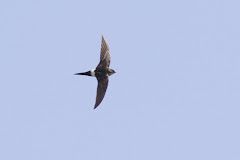



Photos:
i) Pantanal gang:
Back row (left to right): Governor of Mato Grosso's personal assistant, Ian Johnson (former Vice President of the World Bank), me, Michael Kauch (German MP), Jose (Senator Serys Slhessarenko's office), Anders Wijkman (Swedish MEP) and Malcolm Bruce (UK MP).
Front row (left to right): Ethna Johnson (Ian Johnson's wife), Maria (interpreter), Caroline (Governor's office) and Grazia Francescati (Italian MP).
ii) A Capybara (the world's largest rodent)
iii) A Caracara (a bird of prey)
iv) A macaque
A work commitment meant I spent ten days in Brazil in mid-February, arranging the policy content of a climate change forum for legislators from the G8 countries and the major emerging economies of Brazil, China, India, Mexico and South Africa. It was a very successful event, if exhausting, with President Lula, the Japanese Prime Minister and over 80 legislators in attendance. We managed to secure consensus statements on biofuels, forestry and made a lot of progress on developing a post-2012 framework for climate change. Afterwards, courtesy of the Governor of Mato Grosso, Blairo Maggi, we spent two days in the Pantanal, a huge wetland area (about the size of France) in the west of Brazil. The sheer scale of Brazil is staggering. We met with the Governor in the city of Ciuaba after he had travelled 2,000km to meet us, from his home in the same state! After that meeting, where he assured us that his USD150m fortune from soya was not impacting on the rainforest or other highly biodiverse land (ehum), he invited us to visit the Pantanal as his personal guests. After travelling 3 and a half hours along what can best be described as a dirt track, we arrived at the Sesc Pantanal Lodge set in the stunning Pantanal wetlands. The period Dec-Jun is the wet season so the water level was very high. Most of the forested area was flooded and we had to get around by boat. Having arrived at around 8pm we were given 20 minutes to change before heading out on a night safari. This involved taking a boat on the river with a huge spotlight, hoping to see some of the local wildlife. Literally ten metres from the pier we spotted a Caiman, a sort of mini crocodile, the first of several we were to see that night.. Later on we saw bats the size of hawks, some nocturnal birds that resembled giant nightjars, several brightly coloured frogs, an anhinga (a sort of large cormorant) and a few Capybaras (the world's largest rodent). The following day was spent walking some of the trails where we saw monkeys, lots of birds (most of which I had no idea from which family they were, let alone species!), lots of stunning butterflies and more Capybaras. An amazing place and a real dream come true to visit. The pre-trip talk of huge mosquitos carrying malaria, denge and yellow fever, cockroaches the size of rats and leeches that lie in ambush as you walk past was soon forgotten when the locals told us there was no malaria in the area, no yellow fever and no cases of denge fever for years. Phew... Apparently if we had visited the area 200 miles to the north, all three are present.
All in all an amazing trip and I will definitely be back..






3 comments:
Sounds like an interesting trip!
We stayed at the Sesc Pantanal Lodge last August, what a place! You can always check my gallery to identify some of the birds you saw, the large nocturnal birds could have been Nacunda Nighthawk.
http://www.pbase.com/tereksandpiper
1st gallery Mato Grosso
Sounds like an interesting trip
we stayed at the Sesc Pantanal Lodge last August, what a place! You can always check my gallery to identify some of the birds you saw, the large nocturnal birds could have been Nacunda Nighthawk.
http://www.pbase.com/tereksandpiper
1st gallery Mato Grosso
Thanks Will.. Have had a look and your photos are stunning. Have identified at least 20 species from your photos, so thanks very much!
Post a Comment